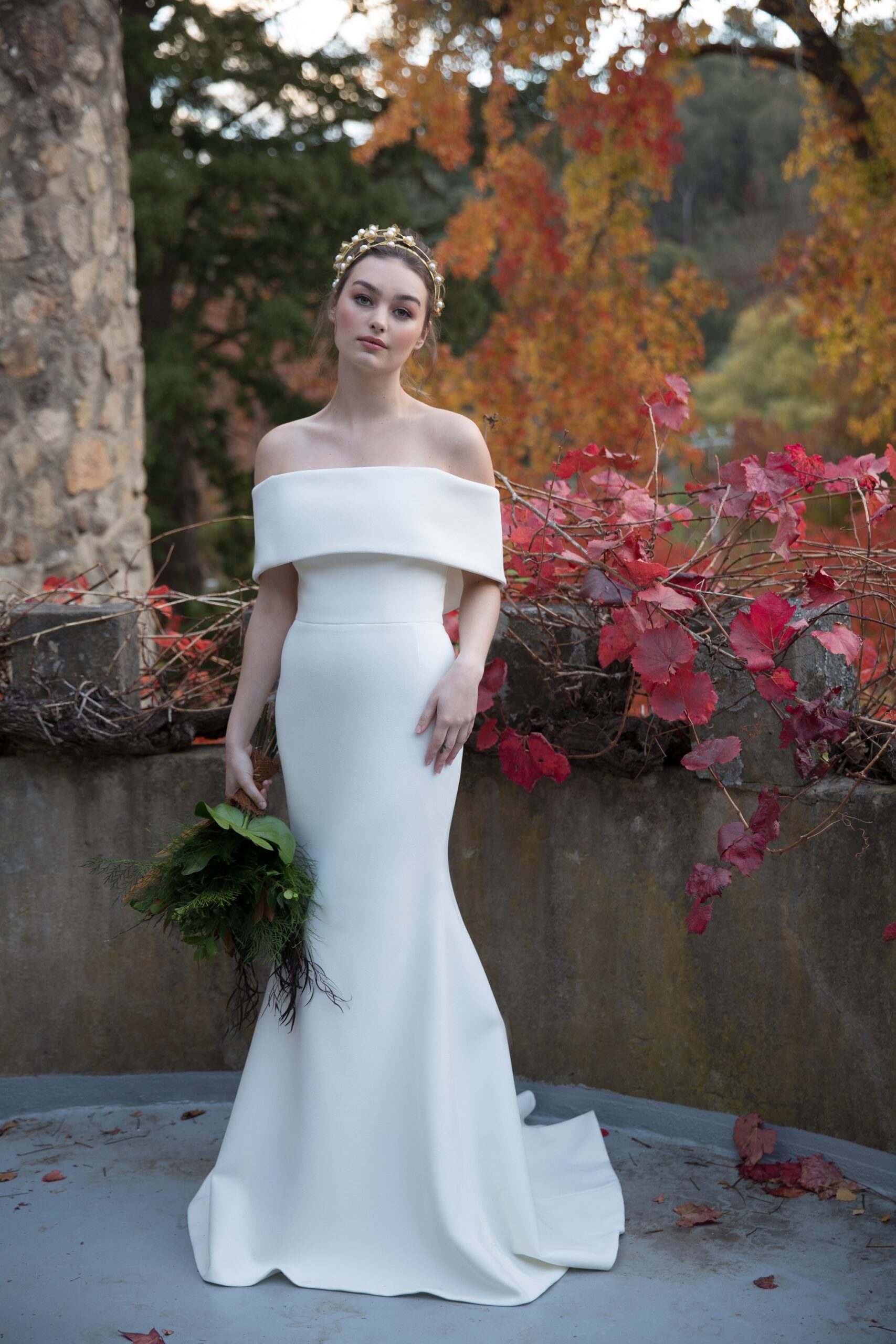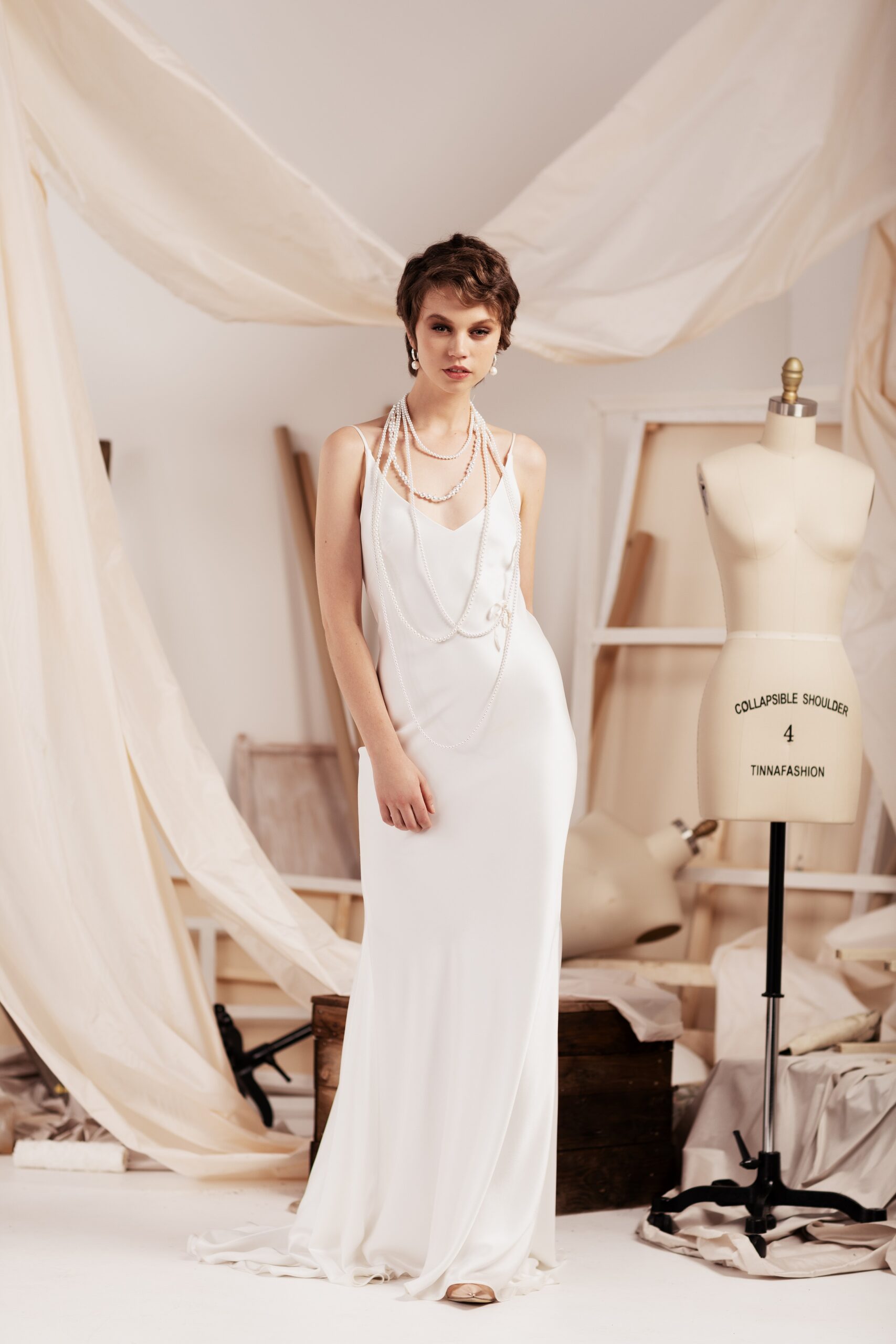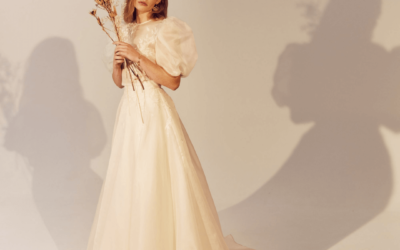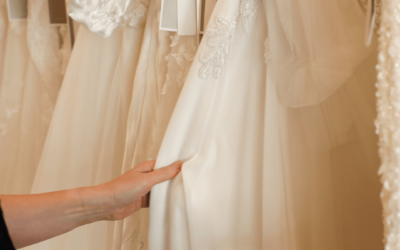Wedding Dress Styles
A Calèche guide to different wedding dress styles – Part 1
Congratulations! You’re newly-engaged and maybe you’ve booked your first dress appointment.
To do this, it’s very helpful (to both you and us) to have a basic understanding of wedding dress styles and the differences between them. Please, let us reiterate the word basic. We really don’t expect you to know everything, but knowing the difference between the most common silhouettes is a great place to start.
In this blog we have selected a few of the wedding dress silhouettes you are likely to find in our boutique and have explained (with as little technical lingo as we could) what they are, how they differ and how to ask for them. Stay tuned to this series though, because next we’ll discuss different types of necklines.
A-line
A-line is the perfect place to start because an A-line gown is arguably the most universally flattering style. An A-line gown is fitted at the waistline and gradually flares out into a voluminous skirt, often resembling the shape of an A (hence the name). A-line refers to the silhouette of the gown, but it doesn’t narrow down the style of bodice or the fabric. So, by choosing the style of bodice you can choose which part of your torso to feature. For example, La Scala (pictured) is an A-line gown with a sweetheart neckline and a stiffened skirt, in corded lace over a champagne satin base. Don’t worry if this is a bit confusing, we’ll just focus on the silhouettes for now and discuss bodice styles later.
What you may also want to specify is the volume of skirt you are looking to try. Typically a standard A-line gown will have a skirt that sits (approximately) 40cm out from your feet at each side. However an A-line skirt can be a range of different sizes. To narrow down the volume of the skirt, you can refer to a soft A-line or a full A-line. We’ll talk more about full A-line skirts below under “ballgown”.
Lolita and Monroe are more examples of a standard A-line gown. Lolita is a full circle skirt, whereas Monroe is a half circle skirt. The Lolita has more folds and a larger hem circumference and the Monroe is stiffer with a smaller hem circumference.
For examples of a soft A-line gown, check out Via Condotti and Alice.


Ballgown
For centuries the ballgown has been a classic wedding dress style, however, over the past decade we have seen a shift to minimalism and the opulent ballgown tends to swing in and out of fashion. The difference between an A-line gown and a ballgown is the defined waistline and immediate full skirt of the ballgown; as opposed to the gradual flare out of the A-line skirt.
At Calèche, we don’t really have ballgowns in our collections. In fact, most ‘ballgown’ labeled dresses today are likely to be just a very full A-line. So, if you are interested in the dramatic style of a ballgown we would recommend to you an A-line gown with a full skirt (or perhaps a statement tulle skirt such as the Athena), paired with a fitted corset bodice that highlights the waist.
Pictured: The Tiziana top & Roma skirt. The Roma is a very full A-line skirt. The skirt is made using a double circle pattern, making the hem circumference much larger than a (single) circle, such as Lolita (mentioned above).
The Portofino gown and the Lima gown are also examples of fuller A-line styles.
Mermaid
A mermaid wedding dress, also known as a fishtail, is one of the best styles to wear if you want to show off those curves. The mermaid gown is fitted down the waistline and hips, to flare out at the knees. The flare of a mermaid gown is quite dramatic, especially in a stiffer fabric. However, the style is extremely versatile and can go from dramatic to soft depending on where the flare begins. We’ll speak more about these other options below under soft mermaid.
The Amal (pictured) and the London are examples of a fitted mermaid gown.


Soft Mermaid
In our boutique we don’t have a large selection of dramatic mermaid gowns on the rack. Calèche style is quite understated, it is subtle elegance. So, our mermaid gowns are typically more of a soft mermaid style. To achieve a softer style of mermaid often we will begin the flare higher than the knees (at the mid-thigh or hip) and/or use a fabric that falls softer. Additionally, how tightly fitted the gown is over your curves can also change the look of the gown from dramatic to soft.
There are plenty of names for this style. Depending on where the flare starts it could be called a Fit and Flare or a Trumpet. Rather than memorizing the exact names and difference between these styles, its probably easier to ask to try a soft or a dramatic mermaid style. You could also specify where you would like the flare to begin and how fitted you want it over your curves. When trying them on, be sure to tell us what you do like and don’t like about the style. Then, you can leave it to our experienced bridal consultants to guide you to the perfect silhouette.
Pictured: the Verona gown is a mermaid style wedding gown, with the flare sitting at the knees. The flare is quite soft because the fabric is soft and drapey. Tivoli and Megan are also examples of a soft mermaid style.
Sheath
Sheath gowns typically skim your figure, they are slim-fitting but not figure-hugging and fall straight to the floor with minimal flaring. Sheath gowns are often recommended for petite brides who want to appear taller or alternatively for taller brides who want to show off their height. However, sheath gowns are typically less common than A-line or mermaid gowns.
Pictured: Luna could technically also be called a soft mermaid, however, the fit is very relaxed over the curves and the fabric is heavy so the fall of the skirt is quite straight, as opposed to flaring out to the sides. Luna is also pictured with a detachable train, which adds some volume and drama to the skirt. The Carly and the Grace are also examples of gowns with a relaxed fit and straighter drop.


Slip
And perhaps the most casual yet – the iconic slip. The slip is fashioned after just that, a slip. Made to look like the slinky under garment, the satin slip has skyrocketed to popularity alongside the minimalism trend in the last few years. The nature of the bias cut style means that it hugs/skims the body and is extremely comfortable to wear. If you’re looking for a style that is modern and elegant, yet simple and understated then look no further.
Loulou (pictured) is also available in a beaded fabric as Kiki Dee if you are looking for more of a statement.
Feeling a bit confused or still have an unanswered question? Email us at liz@caleche.com.au and we’ll do our best to help you out.
If you’re ready to start shopping visit our contact us page to make your appointment.
Thanks for reading!
Calèche x



